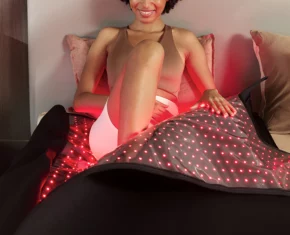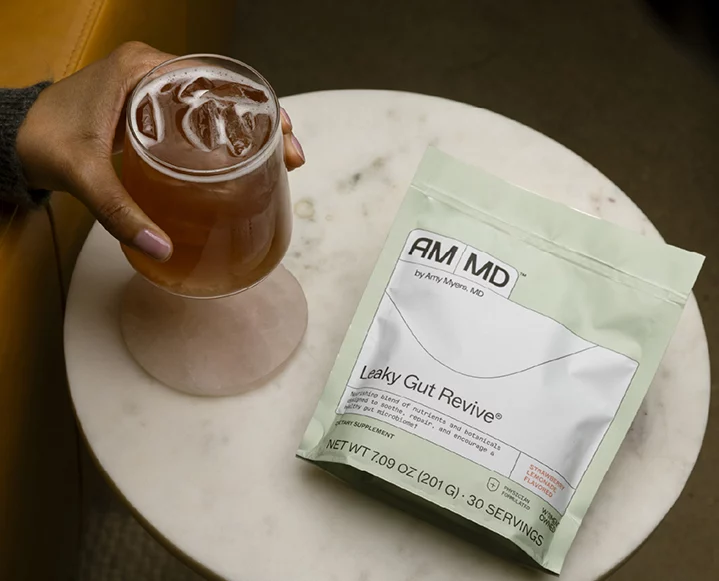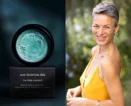There’s a new kind of entrepreneur on the block, one that melds beautiful design and eco-friendly business practices. Kora Design is definitely leading the pack. In the past two years, designing duo Maxandra Short and Amy Walker have built a company that not only produces some of the most gorgeous baubles around, but also sustains several communities of artisans in Africa, where all of their jewelry is produced. They’ve got fans all over the world, and the Kora ladies teamed up with The Girl With The Dragon Tattoo’s Rooney Mara and Uweza—a foundation that dedicates itself to ending poverty in Kenya’s Kibera slums—to create a horn and recycled metal necklace that was at the top of many holiday wish lists. And while they may be making an impact on the economy across the world, if you want to get a glimpse of Kora’s stateside studio and sneak a peek at where the designs are conceived, we’ve got a ticket to their dreamy, light-filled Laurel Canyon digs in Los Angeles. It may be a world away from the bustling city of Hollywood below (and the Kenyan communities they help support), but this nestled canyon retreat is the perfect place to catch up with two of our favorite young designers.
TCM: What inspired you to start Kora?
Amy: I was living in Rwanda doing business development for a nonprofit when I came across the horn material. The first few pieces we were making were stunning. This was an opportunity for my work to transition from nonprofit to for-profit business development (the trade-not-aid model). I approached Max, a longtime friend with wanderlust and an eye for design, and she was equally as inspired. We began with market tests — small sales events to test the market — and the reaction was overwhelming. Soon after we founded KORA!
TCM: What has been the rewarding moment?
Max: It’s a tie: The first time I saw a total stranger wearing Kora, I saw them on the street in NYC and my heart just jumped. And then it’s also incredibly rewarding each time we go back to Africa, seeing the progress made there on the ground, checking in with all of our artisans.
TCM: What’s the best part of your job as designers?
Max: Designing, and knowing that our pieces are giving back, supporting the artisans we work with back in Kenya and their families by giving them a steady source of income. Channeling the considerable buying power of the developed world to do good feels pretty awesome.
Amy: Designing. By far the most fun — especially when we get to work in Nairobi. Some designs are a bit unusual for the artisans but they are always up for the challenge.
TCM: Biggest surprise starting a small, sustainable jewelry company?
Max: That the thrill of discovering new materials remains strong. And the endless adaptability of our materials, and how a focus on recycled or repurposed materials isn’t at all limiting, it’s actually incredibly fulfilling and inspiring to work within those parameters.
Amy: How much I still fall in love with our classic pieces – the horn is so unique that every one is a gem.
TCM: How has your business affected the lives of the people and communities who make your product?
Max: It provides our artisans with a steady source of income. And the workshops are able to build their businesses with the steady income stream as well.
TCM: What areas do you source from?
Amy: East Africa, mostly Kenya. And some of our pieces come from Ghana.
TCM: Tell us about the average craftsman creating your product in Kenya and Rwanda.
Max: Many of the workshops we source from are based in the slum districts of Nairobi, very poor areas where jobs are scarce. Most of our artisans are also from those areas and are trained in carving or casting, giving them a steady job, which provides valuable income for themselves and their families.
TCM: What materials do you use to create your jewelry?
Amy: Recycled Ankole cow horn (cows are not harmed, the horn is bought from local abattoirs, or butcheries, where it would typically otherwise be discarded — the horn is a byproduct of the meat industry in Kenya), recycled cast brass and aluminum (cast from scrap metal and old cooking pots and car parts). Greek leather, repurposed brass wire. Recycled glass.
TCM: Biggest challenges you’ve faced since you started Kora?
Max: Production in Africa, being so far away.
Amy: The flights!
TCM: How can small businesses like yours affect communities in need?
Amy: Like Max mentioned above, providing steady income (and the trickle down effect in the local community) is how KORA helps the communities in which we work.
TCM: Why do you believe in this type of business model?
Amy: We once asked the artisans in the horn workshop what they thought the Kibera slum district needed for development and they said jobs. In my experience, the nonprofit model focuses on trainings and helps support the business via donations, but if there is no source to market the products then the on-the-ground efforts are fruitless. There are nonprofit models and hybrids (non- and for-profit) that work well, but we believed for-profit was the best setup for KORA.
TCM: Tell us about your dog, Gabo.
Amy: Gabo is our right-hand man from Rwanda. I adopted him when I was living in Kigali when he was just a few weeks old and now he is a full time L.A. resident. We like to think of him as our mascot.
TCM: What’s new for the spring collection?
Max: For spring we gave everything a serious infusion of color. We started using a profusion of colored leather cord in a color palette that ranges from bold and primary (yellow, electric blue, bright Kelly green) on one end and subtle and desert-inspired (camel, desert rose) on the other. To balance out the pops of color the collection also features angular, geometric metal pieces — inspired by Calder and the expanses of Rothko — as well as organic shapes inspired by ancient ceremonial jewelry designs from Papua New Guinea. All cast in recycled brass.
TCM: What is your favorite piece?
Max: I gotta say that the leather-wrapped Ruma bangles are my fave. They’re a color pop adaptation of our classic Rumas, which are Kora’s signature, and it’s been so cool to give them an ever-changing color palette with the colored leather. We’re working on new color combos for our FW 12 collection, which is one of my favorite things to do. Whenever I’m out and about I’m constantly finding new and amazing color combo options.
Amy: My favorite is the diamond tab ring. It’s simple yet unique. The conflict-free diamonds are a new addition to KORA.
TCM: What advice might you give to others wanting to support international development through small business?
Max: Dialog and trust with your producers.
KORA is available at ShopKoraDesigns.com; Los Angeles: TenOverSix, Roseark, Driftwood, Yolk; New York: Henri Bendels, Saks, Anthropologie, Maryam Nassir Zadeh.











